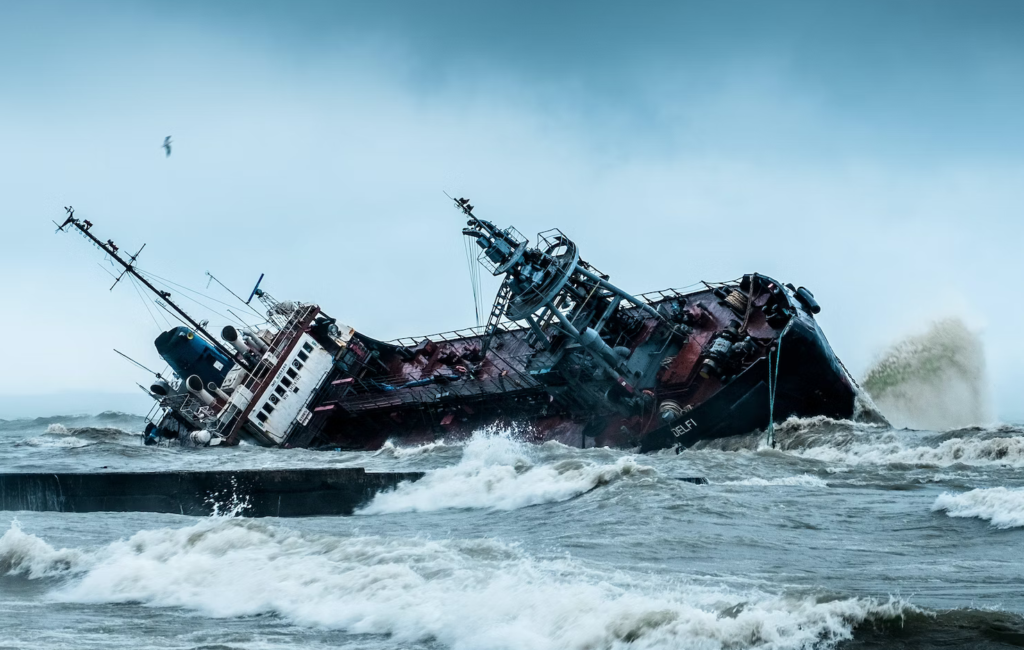Rescue Teams on High Alert:
In a desperate race against time, frantic rescue officials are scouring the seas off the storm-battered southern coast of Taiwan for a missing cargo ship that sank in the furious typhoon, Gaemi.

The freighter, flying the flag of Tanzania and carrying nine Myanmar nationals, was located off the hustling and bustling port city of Kaohsiung when it went down. The incident highlights the sheer power and unpredictability of natural disasters and has cast a somber shadow over the island nation.
Devastation by Typhoon Gaemi:
Typhoon Gaemi finally violently landed on the east coast of Taiwan and caused a lot of destruction with chaos. Three deaths have been reported and hundreds of people left injured, which substantiates the dark scenario. Before it shook Taiwan, Gaemi had already made a trail of destruction in the Philippines by causing relentless rains, resulting in eight deaths and wide-scale damage. The far-reaching extent and intensity of the storm again call for preparedness and rapid response in the face of such natural disasters.
Details of Incident and International Response:
The Taiwan Coastguard Administration has been at the forefront of the rescue, providing updates and mustering resources. The nine crew members of the ill-fated freighter were citizens of Myanmar; hence, there is also a sense that such disasters cut across human boundaries. Apart from the sunken ship, three other foreign vessels ran aground, further complicating rescue operations and highlighting the far-reaching maritime impact of the storm.
Disruptions and Precautions:
The typhoon packed powerful winds, leading the military to cancel most of its largest annual exercises. Nearly all domestic flights and over 200 international flights were cut, nearly stranding thousands of passengers and creating a logistical nightmare. The authorities have warned of the threat of landslides and flash flooding, particularly in areas already weakened by a major earthquake in April. These compounded threats underscore the multifaceted challenges that natural disasters can pose.
HUMAN TOLL AND COMMUNITY RESPONSE:
The toll includes at least one motorist killed by a falling tree and another person crushed by an overturned excavator. But those are not the only humans affected: over 8,000 people across the island are now displaced for their own safety. Community response has been quick and compassionate; local officials and volunteers have labored nonstop to shelter those displaced by the storm.

Typhoon’s Path and Future Threats:
Gaemi’s path was followed closely from when it first made landfall near the southeastern coast of Taiwan in Yilan county. At the fore, the government declared a typhoon day and suspended work as well as classes islandwide, except for Kinmen islands. Thursday also saw closure of schools and offices, and scrapping of flights from and to Taiwan with the storm threatening to unleash its fury. Gaemi will be weakened crossing over the mountainous terrain of Taiwan, although it may pass again southeast with a second landing in China’s Fujian province.
Safety Measures and Warnings:
The Central Weather Administration issued a land warning for the whole of Taiwan, with emphasis on the heavy rainfall amounts needed in the central and southern mountainous areas. Authorities say the regions could receive between one and two meters of rainfall in the next 24 hours, bringing a high risk of severe flooding and landslides. In the capital city, Taipei, residents are stocking up – leaving supermarket shelves bare as people here prepare for the possibility of price hikes and shortages once this typhoon passes.
Impact on Philippines:
Although Gaemi did not directly hit the Philippines, it enhanced the southwest monsoon and brought heavy rains to Metro Manila and northern provinces. The capital region, with nearly 15 million people, was declared under a state of calamity as rivers and creeks overflowed and submerged streets and homes. Videos on social media show images of tiny cars bobbing in chest-deep waters and commuters stranded on the roofs of submerged buses, illustrating a terrible picture of the outcome from this storm. Work and classes were suspended, and stock and foreign exchange trading halted as the city grappled with the deluge.
Preparations in China:
In preparation for the eventual arrival of Gaemi, a number of rail operators in China have suspended operations in view of the anticipated heavy rains that might cause flooding in Fujian province. The area is already witnessing incessant downpours; as much as 300 millimeters more rainfalls are predicted. The combined effects of prior flooding and the incoming typhoon call for robust strategies of disaster management and coordinated responses.
Conclusion:
The destruction Typhoon Gaemi has caused all over Taiwan, the Philippines, and soon to hit China, underlines how natural disasters are really powerful. Man-made, economic, and environmental losses resulting from such occurrences give meaning to global cooperation in disaster preparedness and response. While rescue efforts continue and communities are rebuilding, resilience and solidarity among those affected give the world hope in light of this adversity.
